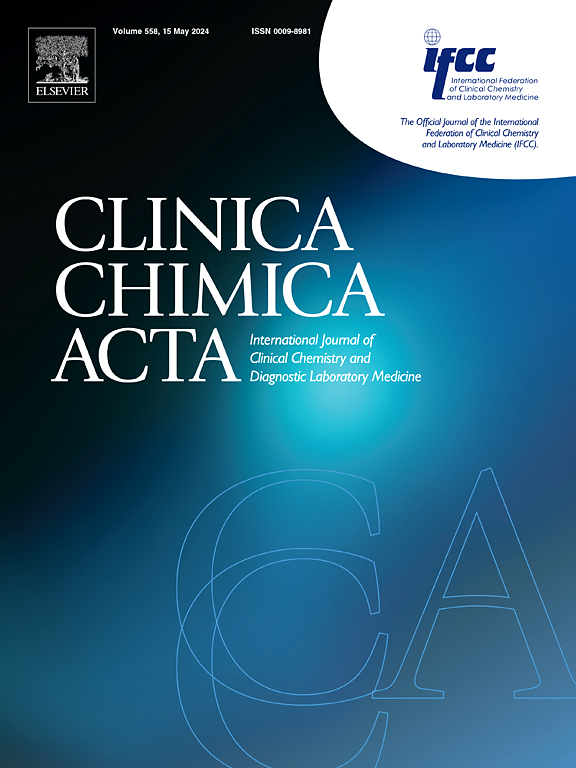Circulating microRNAs and physical activity: Impact in diabetes
IF 3.2
3区 医学
Q2 MEDICAL LABORATORY TECHNOLOGY
引用次数: 0
Abstract
The term “ci-miRNAs,” or “circulating microRNAs,” refers to extracellular microRNAs (miRNAs) that exist outside of cells and can be detected in various bodily fluids, including blood, saliva, urine, and breast milk. These ci-miRNAs play a role in regulating gene expression and are mainly recognized for their functions beyond the cell, serving as signaling molecules in the blood. Researchers have thoroughly investigated the roles of these circulating miRNAs in various diseases. The capacity to detect and quantify ci-miRNAs in bodily fluids suggests their potential as biomarkers for monitoring several health conditions, including cancer, heart disease, brain disorders, and metabolic disorders, where fluctuations in miRNA levels may correlate with different physiological and pathological states. Current methods enable researchers to identify and measure miRNAs in these fluids, facilitating the exploration of their roles in health maintenance and disease resistance. Although research on ci-miRNAs is ongoing, recent studies focus on uncovering their significance, assessing their viability as biomarkers, and clarifying their functions. However, our understanding of how various types, intensities, and durations of exercise influence the levels of these miRNAs in the bloodstream is still limited. This section seeks to provide an overview of the changes in ci-miRNAs in response to exercise.
求助全文
约1分钟内获得全文
求助全文
来源期刊

Clinica Chimica Acta
医学-医学实验技术
CiteScore
10.10
自引率
2.00%
发文量
1268
审稿时长
23 days
期刊介绍:
The Official Journal of the International Federation of Clinical Chemistry and Laboratory Medicine (IFCC)
Clinica Chimica Acta is a high-quality journal which publishes original Research Communications in the field of clinical chemistry and laboratory medicine, defined as the diagnostic application of chemistry, biochemistry, immunochemistry, biochemical aspects of hematology, toxicology, and molecular biology to the study of human disease in body fluids and cells.
The objective of the journal is to publish novel information leading to a better understanding of biological mechanisms of human diseases, their prevention, diagnosis, and patient management. Reports of an applied clinical character are also welcome. Papers concerned with normal metabolic processes or with constituents of normal cells or body fluids, such as reports of experimental or clinical studies in animals, are only considered when they are clearly and directly relevant to human disease. Evaluation of commercial products have a low priority for publication, unless they are novel or represent a technological breakthrough. Studies dealing with effects of drugs and natural products and studies dealing with the redox status in various diseases are not within the journal''s scope. Development and evaluation of novel analytical methodologies where applicable to diagnostic clinical chemistry and laboratory medicine, including point-of-care testing, and topics on laboratory management and informatics will also be considered. Studies focused on emerging diagnostic technologies and (big) data analysis procedures including digitalization, mobile Health, and artificial Intelligence applied to Laboratory Medicine are also of interest.
 求助内容:
求助内容: 应助结果提醒方式:
应助结果提醒方式:


